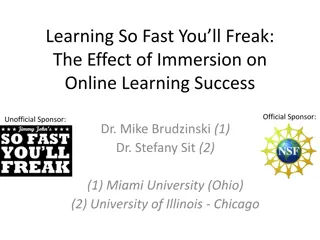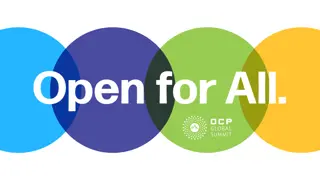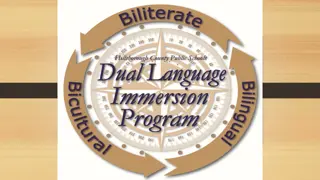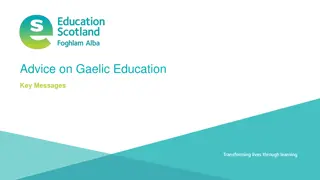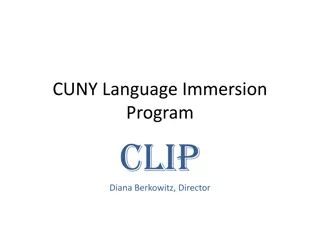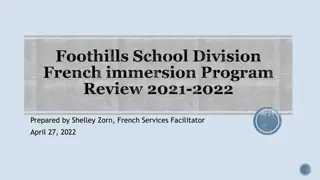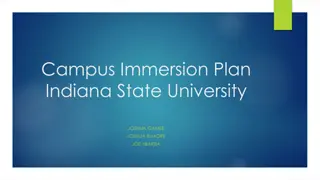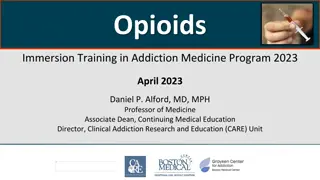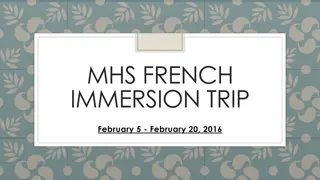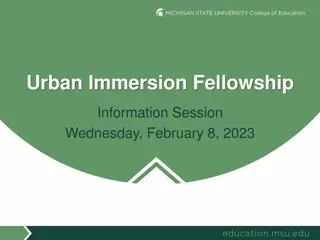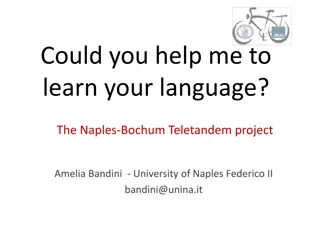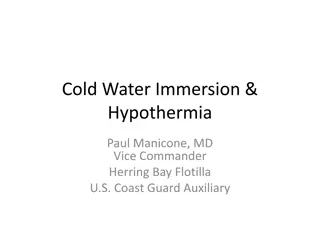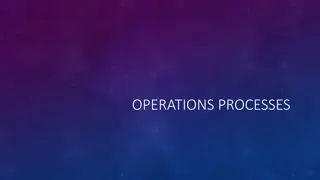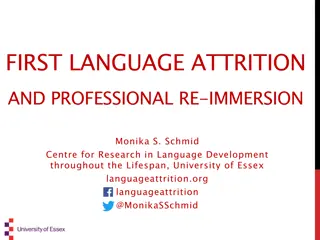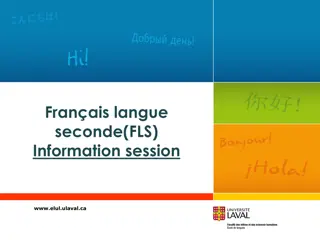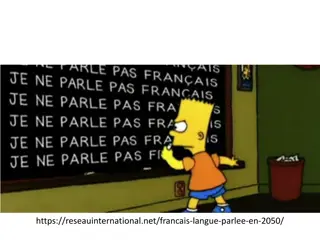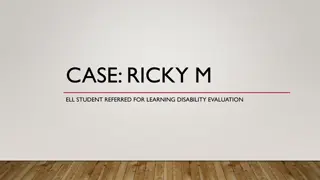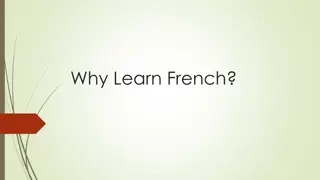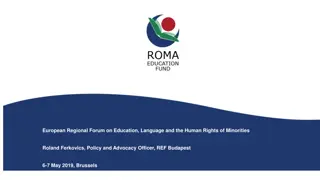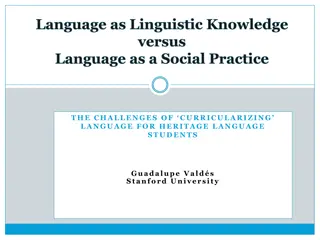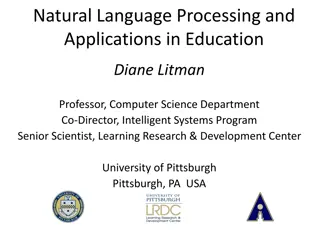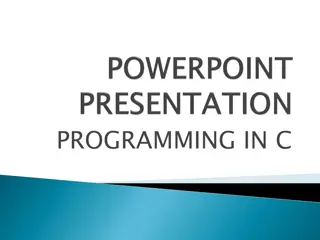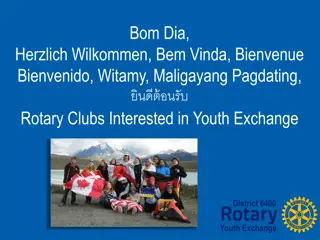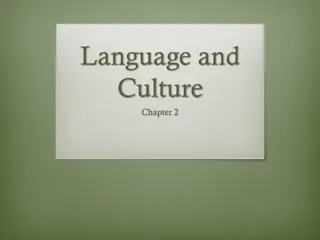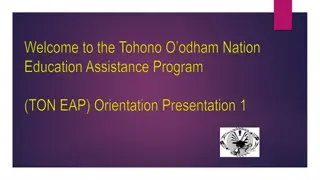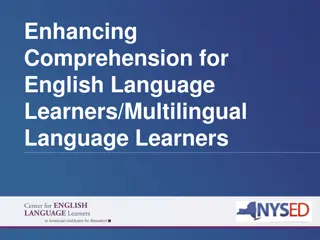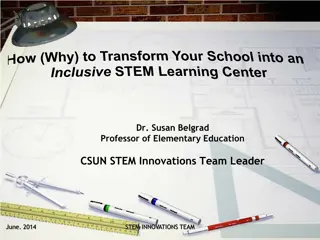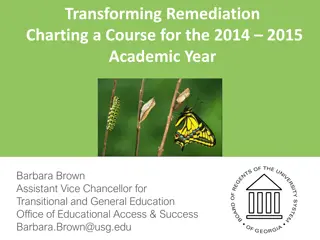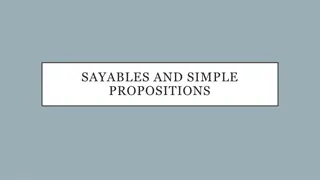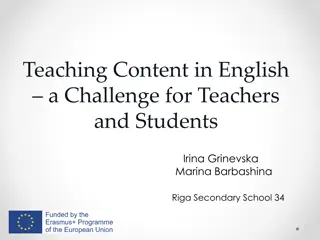Mohawk Language Program: Transforming Education Through Immersion
Explore the transformative Mohawk language program focusing on simple-to-complex teaching methods. Discover the cultural richness of the Six Nations community and their commitment to preserving language heritage through immersive educational approaches. Dive into the admissions process, unique teaching methodologies, and the significance of the root-word method in language learning. Join this initiative bridging the gap between generations and revitalizing indigenous languages.
Uploaded on Sep 12, 2024 | 0 Views
Download Presentation

Please find below an Image/Link to download the presentation.
The content on the website is provided AS IS for your information and personal use only. It may not be sold, licensed, or shared on other websites without obtaining consent from the author. Download presentation by click this link. If you encounter any issues during the download, it is possible that the publisher has removed the file from their server.
E N D
Presentation Transcript
Creating Speakers: 2) From Simple to Complex Owennatekha (Brian Maracle) A.N.L.R.I. Fairbanks May 21-24, 2018
Montreal * Six Nations * Boston * Detroit * New York *
Six Nations 3 out of 6 languages still spoken 13,000 people living on-reserve 2 First-Language Mohawk speakers (2,000 speakers live in the East)
Onkwawenna Kentyohkwa (Our Language Society) 1999
* Adult Immersion Program (Year 1 & Year 2) * On-Line Program * Youtube: onkwawenna kentyohkwa * web: www.onkwawenna.info
Four Presentations #1 Root-Word Method #2 Simple-to-Complex Curriculum #3 Teaching Method #4 Assessments & Goals
Admissions Students do not require an extensive background in the language to attend but anyone wanting to take our program must pass an admissions test.
We give prospective students the answers to the test because we want them to pass.
The test consists of 40 Mohawk words and the English meanings that they must memorize.
kenon:wes = I like it. wakenon:wes = It likes me. seno n:we s = You like it. sano n:we s = It likes you. rano n:we s = He likes it. rono n:we s = It likes him. yeno n:we s = She likes it. yakono n:we s = It likes her. konno n:we s = I like you. takeno n:we s = You like me. rino n:we s = I like him. rakeno n:we s = He likes me. + 28 more
The words on the test are the 40 most common bound pronouns used to construct words. (There are 21 more.)
The 40 words tests memory and commitment. Passing the test does not predict success.
The Curriculum: From Simple-to-Complex
Short words are not necessarily simple. Long words are not necessarily complex.
yenskewe yonkeni serehtsherowa :nen
yenskewe I will arrive back there yonkeni serehtsherowa :nen We (two) have a big car
y en s k ewe 6 elements yonkeni serehtsher owa :nen 3 elements
And not everything that is simple is easy to describe.
tewakathahahkwanonhne te wak at hah a hkw a hn onh ne 10 elements
At Onkwawenna, we start with the simplest form of the language
We start by describing the way someone or something is.
We describe someones or somethings state or condition.
I am You are He is ... She is ... It is ... They are ...
I am standing. You are listening. He is married. She is singing. It is raining. They are crazy.
Soon after learning simple descriptions in the present, students learn to express these states or conditions in the past and future. wenhniseri :yo It is a nice day. wenhniseriyo hne It was a nice day. enwenhniseriyo hake It will be a nice day.
Simple descriptions are what is needed to describe a photograph.
Unit #1 Making Simple Conversations Making statements, questions, answers Using negatives, qualifiers, conjunctions With just two verbs to like & to know Asking & Answering naming questions
Unit #1 Test I know that you like that boy but do you know if he likes you? That young woman, the one named Kathy, doesn t know if that old lady likes her more than you do.
Unit 2 Kinship Negatives Resemblance Dead & Alive Numbers Age Love & Hate
Unit 2 Test Are you related to that good-looking young man named Paul? Mary is 30 years older than her daughter Betty but they still look alike.
Unit 3 Describing the way things used to be Being engaged, married, divorced When something was the case Being in a state/condition again Good people, bad people Having kids, animals, families
Unit 3 Test My wife and I aren t married but we have ten kids. My nephew is a bad kid but I don t hate him.
Unit 4 Times of the day & year Names of days and months Asking and telling time Being here & there: past, present, future Place names
Unit 4 Test You don t have to be here on Tuesday next week. Didn t your parents used to live in Toronto? Where did you live when you before you were married?
Unit 5 70 physical, mental & emotional state verbs: angry, awake, busy, crying, dark-skinned, drunk, eating, famous, fat, funny, happy, hungry, lazy, lucky, nasty, poor, pregnant, sad, short, sleeping, smart, worried, working
Unit 5 Test She won t be happy until she is thinner. He was always drunk when he was single. It s surprising that she isn t married yet.
Unit 6 How action verbs are constructed 30 active verbs: asking, cooking, defecating, eating, getting up, helping, listening, looking, raining, resting, saying, sleeping, snowing, studying, telling, waking up, washing, watching, working
Unit 6 Test Don t wash the car. It s going to rain. You didn t ask me. You told me! The old man always falls asleep after he eats.
Unit 7 20 more complicated action verbs
Unit 8 70 personal possessions: book, car, gun, house, job, money, shoes 15 common verbs used with possessions: buying, getting, giving, trading, using, washing 25 personal possession characteristics: big, cheap, colour, dirty, expensive, good, long, new, pretty, small, soft, ugly, wet
Unit 8 Test Who washed this blanket? It s still dirty. The red wire is often dangerous. The yellow car is too old and ugly for him to No one will buy it.
Unit 9 20 original food names & roots: beans, corn, fish, fruit, potatoes, meat, water 60 new food names: banana, beer, cake, pizza, spaghetti 5 action verbs used with food: cooking, eating, liking, making 20 food characteristics: baked, burnt, frozen, mouldy, salty, sweet
Unit 9 Test I hate hard butter. This apple is not sweet. Carrots are not fattening. My neighbour s son eats too much candy.
Unit 10 40 outside nouns & roots: cloud, fence, garden, hill, rapids, town, tree 20 places in a house: bathroom, couch, garage, kitchen, yard 30 places in relation to a house: behind, in front, north of, this side of
Unit 10 Test Why is your son lying in the mud? She s running on the other side of the road. Is your car on the left or right side of the fence?
Unit 11 60 body part nouns and roots: arm, blood, eye, hair, nose, thumb, tooth 10 action verbs used with body parts: bite, sniff, bleed, hit, touch, grab, rub, scratch 20 sicknesses & ailments: blind, cancer, deaf, diabetes, fever, flu, in pain
Unit 11 Test Why is your tongue so dark? I had a stomach ache yesterday and now I have a headache and a fever. Chickens don t have toothaches because they don t have teeth.


